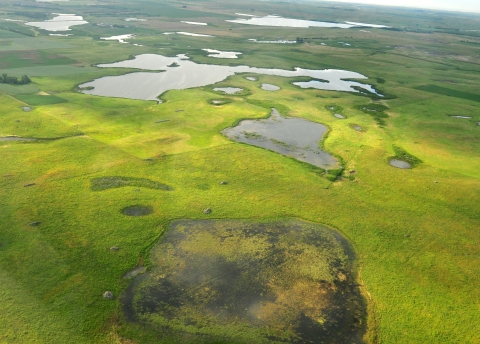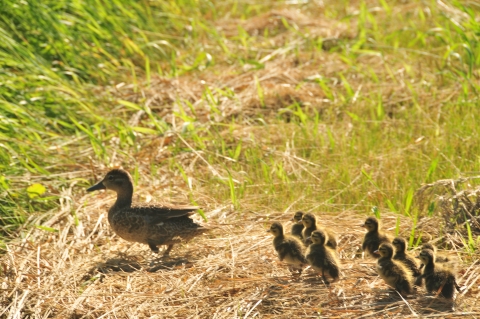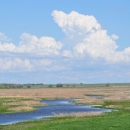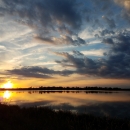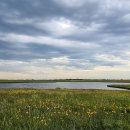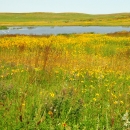About Us
For thousands of years, man has been attracted to the Sand Lake area in search of wildlife. Early-day Indians and later fur traders and white explorers, such as John C. Fremont and Joseph N. Nicollet, hunted waterfowl and other game in and around Sand Lake's marshes and grasses. In the late 1870s, the first homesteaders began settling in the James River Valley. They, too, found Sand Lake and the James River areas excellent places to hunt game, primarily for food. Today, thousands of visitors are likewise drawn to the Sand Lake area by a rich abundance of wildlife.
However plentiful, the wildlife of the northern prairies was not inexhaustible. Once settlement began, prairie wildlife was increasingly threatened by man's encroachment into their habitat. Native grasslands were plowed and wetlands drained. By the 1930s, virtually all wetlands were dry. A combination of wetland drainage and drought transformed wet prairies into a land of blowing dust and dry wetland basins. Waterfowl numbers plummeted to an all-time recorded low.
Concerned citizens responded by supporting restoration of waterfowl habitat. Sand Lake National Wildlife Refuge was created in 1935 as a part of the effort to rebuild waterfowl populations. It is managed by the U.S. Fish & Wildlife Service. Once Sand Lake became a refuge, work began to make it even more attractive to wildlife. With the help of local residents, low dams were built to permit manipulation of water levels and marsh vegetation. Uplands were planted to provide food and cover for wildlife. Through these efforts, the Sand Lake area was transformed into a refuge that became nationally famous for its abundant wildlife.
Today, the 21, 498 acre Sand Lake National Wildlife Refuge serves as a breeding and resting ground for migratory birds of all types. Providing quality habitat helps the refuge meet these needs. Additionally, the Sand Lake Refuge has been designated as a "Globally Important Bird Area" and a "Wetland of International Importance". For more information, please contact the Sand Lake refuge office.
Our Mission
Each unit of the National Wildlife Refuge System is established to serve a statutory purpose that targets the conservation of native species dependent on its lands and waters. All activities on those acres are reviewed for compatibility with this statutory purpose.
The Sand Lake National Wildlife Refuge serves as a breeding and resting ground for migratory birds of all types. Providing quality habitat helps the refuge meet these needs.

